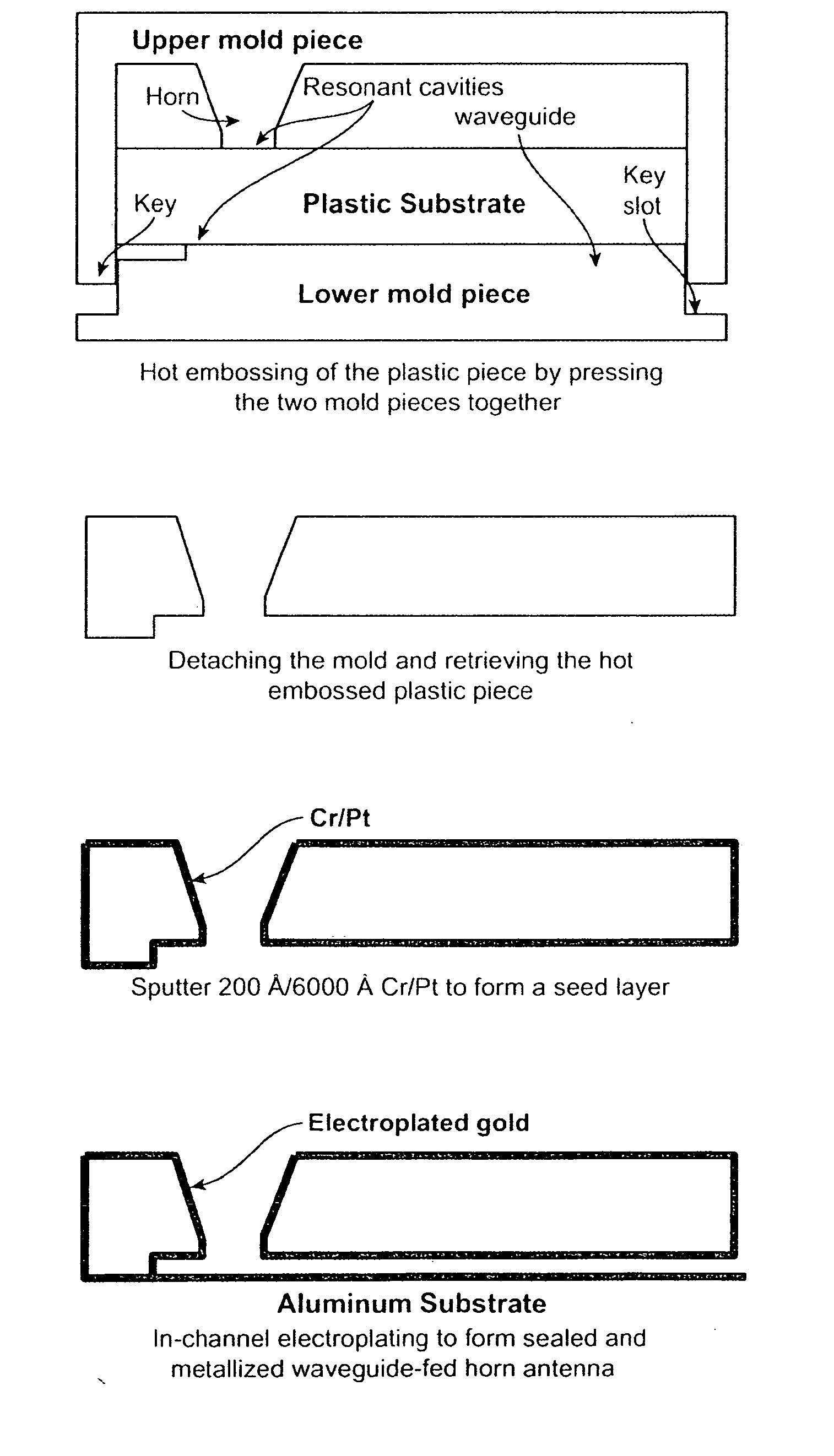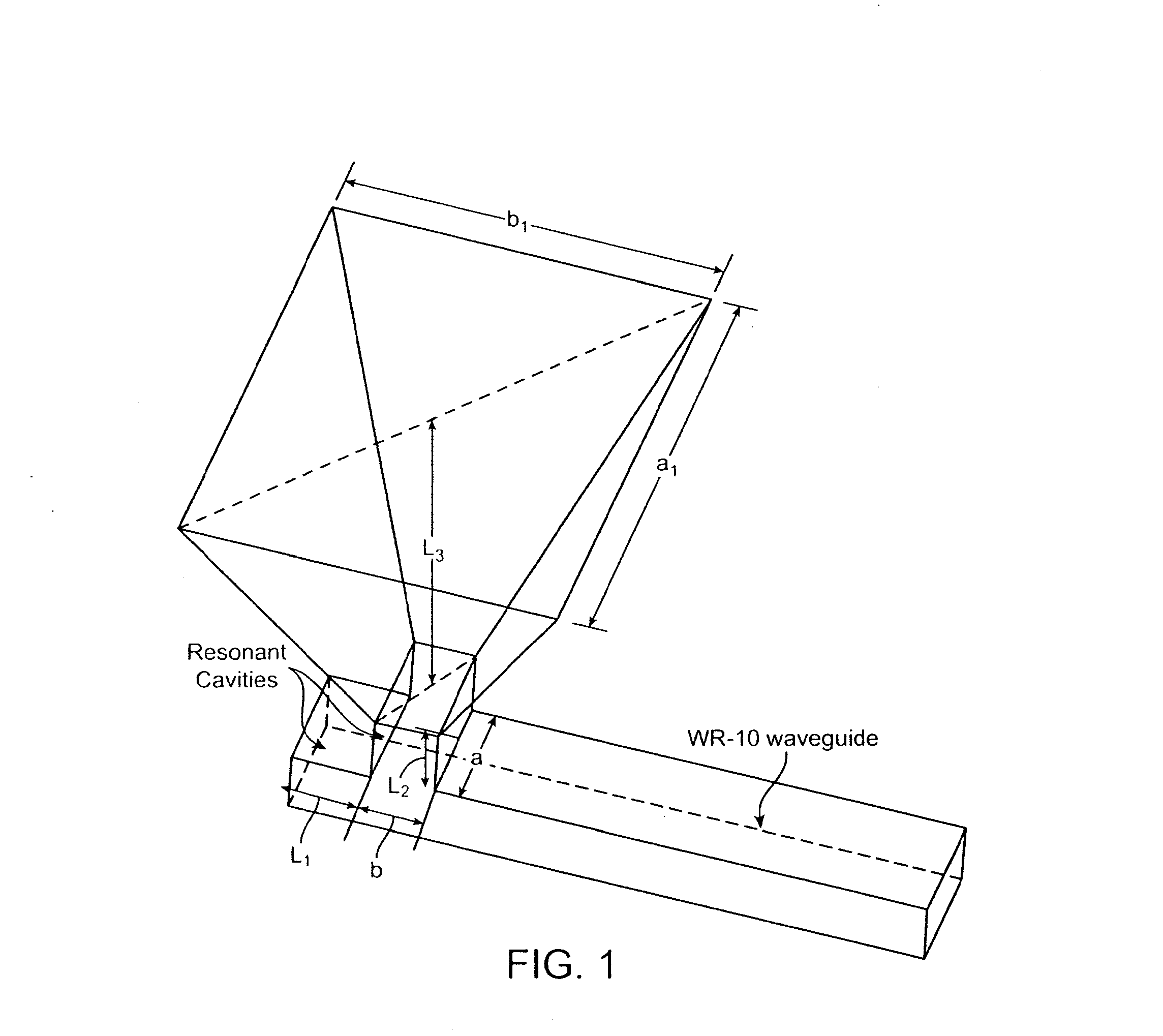Plastic waveguide-fed horn antenna
- Summary
- Abstract
- Description
- Claims
- Application Information
AI Technical Summary
Benefits of technology
Problems solved by technology
Method used
Image
Examples
Embodiment Construction
[0053]FIG. 1 shows the schematic diagram of a waveguide-fed horn antenna. A pyramidal horn, which is flared in both the E- and H-planes, is used. The radiation characteristics of a pyramidal horn are a combination of the E- and H-plane cross sectional views shown in FIG. 2. The design of the pyramidal horn can use the optimum gain method by specifying the dimensions of the waveguide and the desired antenna gain. In order to physically realize a pyramidal horn, the height of the pyramidal horn, L3 in FIG. 1 (PH or PE in FIG. 2) can be given by (see, Constantine A. Balanis, Antenna Theory: Analysis and Design, (John Wiley, 1997), pp. 651-721):
pH=(a1-a)[(ρHa1)2-14]1 / 2(1)pE=(b1-b)[(ρEb1)2-14]1 / 2(2)
[0054]The gain, Go, of a horn antenna is related to its physical area and the operation wavelength, λ, and is given as follows (see, Constantine A. Balanis, Antenna Theory: Analysis and Design, (John Wiley, 1997), pp. 651-721):
Go=124πλ2(a1b1)(3)
[0055]The maximum directivity for the H-plane hor...
PUM
| Property | Measurement | Unit |
|---|---|---|
| Thickness | aaaaa | aaaaa |
| Length | aaaaa | aaaaa |
| Size | aaaaa | aaaaa |
Abstract
Description
Claims
Application Information
 Login to View More
Login to View More - R&D
- Intellectual Property
- Life Sciences
- Materials
- Tech Scout
- Unparalleled Data Quality
- Higher Quality Content
- 60% Fewer Hallucinations
Browse by: Latest US Patents, China's latest patents, Technical Efficacy Thesaurus, Application Domain, Technology Topic, Popular Technical Reports.
© 2025 PatSnap. All rights reserved.Legal|Privacy policy|Modern Slavery Act Transparency Statement|Sitemap|About US| Contact US: help@patsnap.com



